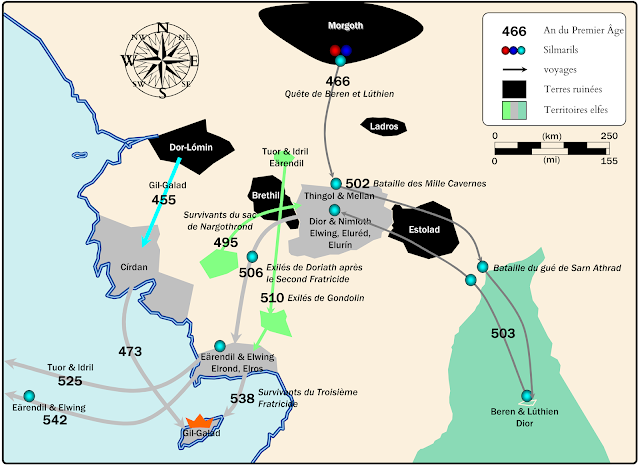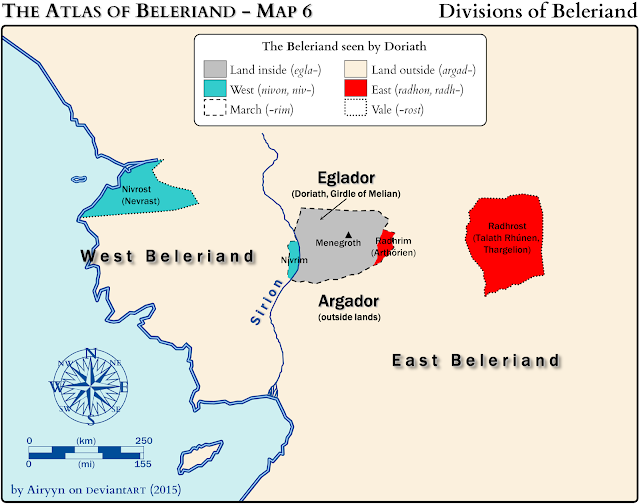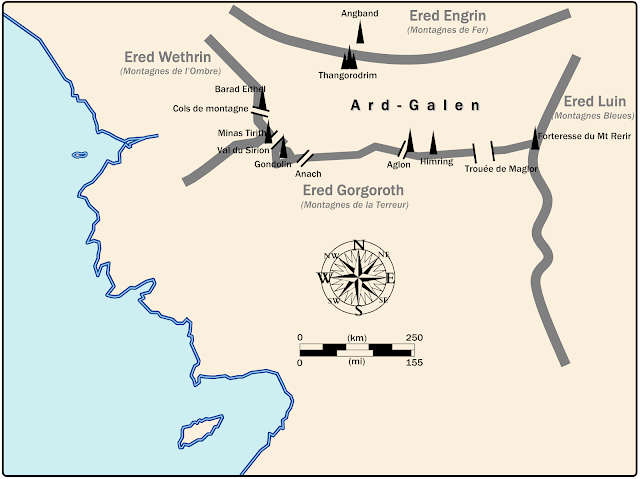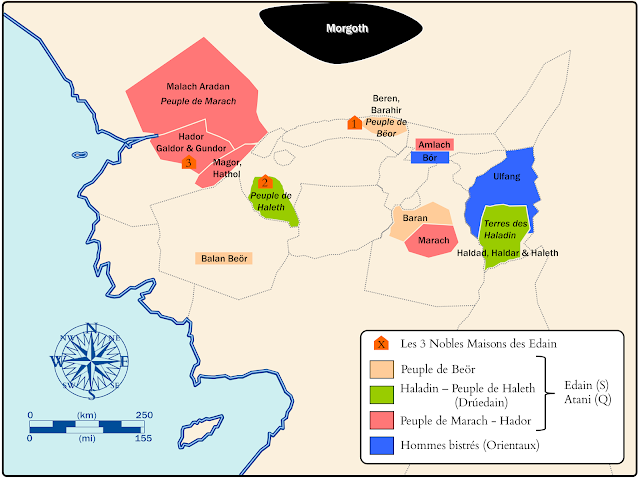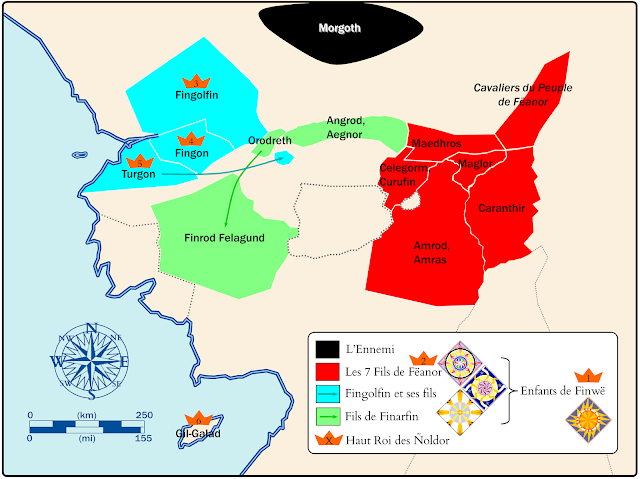(cliquez sur l'image pour l'agrandir)
La Plaine Fortifiée (Atlas du Beleriand - Carte 5)
Durant le Siège d'Angband, Morgoth fut encerclé par les Elfes Ñoldor autour de la Plaine d'Ard-Galen.
L'encerclement de Morgoth et son retranchement dans Angband sont aidés par l'orographie. La plaine est encadrée par les montagnes, et elles sont percées par des cols et gardées par des forteresses [1]. La plaine était gardée par des hmmes do'armes et des espions : cavaliers elfes dans les basses terres, et aigles majestueux dans les Crissaegrim (entre Anach et le Val du Sirion) [2].
Les montagnes au sud de la plaine constituaient une barrière naturelle à l'extension de Morgoth. Bien qu'il fut retranché dans Angband, il eut un renfort infini dans ces caves souterraines.
En face de lui, l'alliance elfe était fragile à cause de tensions internes. De plus, les elfes hésitaient à se lancer dans une guerre à l'issue incertaine [3]. Cependant, durant quatre siècles, cette alliance fut suffisante pour arrêter les orques aux portes du Beleriand. La situation changea dramatiquement avec l'attaque soudaine de Morgoth appelée Dagor Bragollach, prélude à la défaite pour les elfes. Lors de cette attaque, Ard-Galen la verte plaine fut brûlée et devient une plaine de cendres, elle fut alors appelée Anfauglith.
L'expression "la Plaine Guardée" écrit bien Ard-Galen, mais elle s'applique à Talath Dirnen, la plaine entre Nargothrond et le Doriath dans le Beleriand Ouest.
***
A propos de l'Atlas du Beleriand
Cet
Atlas est une série de dix cartes (ou plus!) concernant la géographie,
l'histoire et la géopolitique dans le Beleriand, le territoire des
évènements du
Silmarillion.
Cette carte a été créée pour illustrer
un essai dédié à la géopolitique en Beleriand publié sur le site
JRRvf. La carte a été améliorée et ensuite
publiée sur Deviantart.
***
Détails techniques
Deux polices de caractères ont été utilisées : Franklin Gothic Medium et
Cardo de David J. Perry.
***
Bibliographie et références
[1] La forteresse de Tol Sirion fut dessinée par Tolkien. Voir le livre "Pictures of JRR Tolkien" dessin n°36.
[2]
Silmarillion, p102
"For
Manwë to whom all birds are dear, and to whom they bring news upon
Taniquetil from Middle-earth, had sent forth the race of Eagles,
commanding them to dwell in the crags of the North, and to keep watch
upon Morgoth;"
[3]
Silmarillion, p138
"But
because the land was fair and their kingdoms wide, most of the Noldor
were content with things as they were, trusting them to last, and slow
to begin an assault in which many must surely perish were it in victory
or in defeat Therefore they were little disposed to hearken to
Fingolfin, and the sons of Fëanor at that time least of all."
